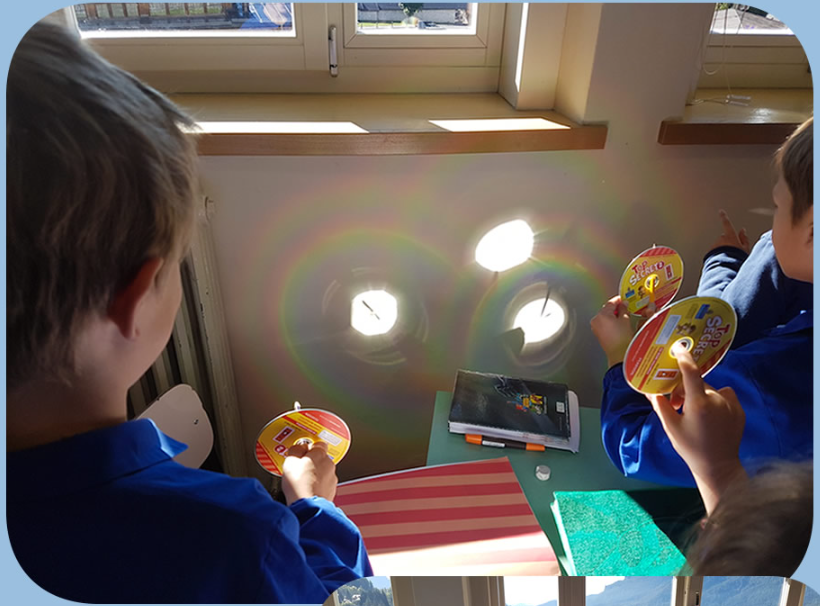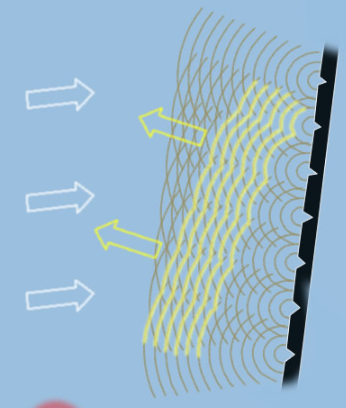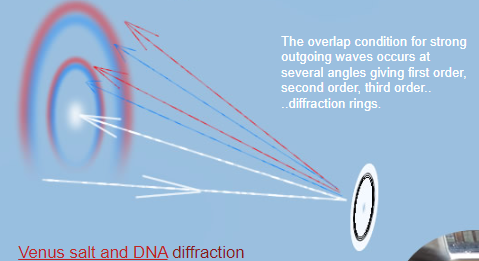CD Sun Circles
CD Sun Circles: A Fascinating Display of Light and Color
Have you ever wondered why a CD, beyond its primary function as a music or data storage device, can create mesmerizing displays of colored rings when reflecting sunlight? It turns out that these enchanting circles are the result of the intricate structure of the CD's surface and the properties of light. In this article, we will delve into the science behind CD sun circles, exploring the phenomena of diffraction and interference that give rise to these captivating optical displays.
The Intricate Spiral Structure of a CD
To understand how CD sun circles are formed, we must first examine the surface of a compact disc. Unlike old vinyl records, which have grooves, a CD contains a spiral of tiny pits that encode information. These pits are arranged in a spiral pattern that reads from the center of the disc outwards. Each twist of the spiral is incredibly close to the next, with a distance of just over a micron (1/1000mm) between them.
Scattering and Wave Interference
When sunlight shines on the CD's surface, each pit scatters the light. As a result, a wave stream or train is created along each line of pits. Depending on the angle and wavelength of the incident light, these waves can either overlap constructively or cancel each other out. This phenomenon, known as diffraction or interference, plays a crucial role in the formation of CD sun circles.
Diffraction Gratings and Spectral Splitting
The linear arrays of scatterers on the CD's surface act as diffraction gratings. These gratings cause the incident light to split into its component colors, similar to how a prism separates white light into a rainbow spectrum. The angles at which the waves overlap constructively determine the directions of strong outgoing light beams. This splitting of light into spectra is what creates the vivid and well-distributed colors observed in CD sun circles.
The Creation of Colorful Rings
As the waves of light interfere with each other, they form diffraction rings at specific angles. These rings are a result of the overlap condition for strong outgoing waves occurring at different angles, known as first order, second order, third order, and so on. Each order corresponds to a distinct ring of color encircling the central reflection on the CD's surface. It is this intricate interplay of diffraction and interference that gives rise to the captivating display of colored rings in CD sun circles.
A Captivating Discovery in an Italian Primary School
The enchanting phenomenon of CD sun circles was discovered by students at a primary school in the province of Belluno, Italy. During an English lesson on colors, a student playfully manipulated a CD that came with an English book, creating a circular rainbow around the reflection of the sun. The clarity and distribution of the colors amazed the students and their teacher. This discovery sparked the curiosity of other children, leading to further exploration and experimentation with CDs to create similar color projections and shadow effects.
Conclusion
CD sun circles are a captivating example of how the interaction between light and the intricate structure of a CD's surface can create stunning optical displays. Through diffraction and interference, the sunlight is split into spectra, resulting in the formation of colorful rings around the central reflection. This intriguing phenomenon has fascinated both students and scientists alike, showcasing the beauty and complexity of atmospheric optics. So, the next time you come across a CD reflecting sunlight, take a moment to appreciate the wondrous play of light and color that lies within its surface.

CD Sun Circles
At a primary school in the province of Belluno, Italy students show that there is more to a CD than music or text. Each reflection from the silvery discs is surrounded by coloured rings. How?
"During an English lesson on colors, a student played with the CD that came with the English book, creating a circular rainbow around its sun reflection. I too like to create rainbows with a CD, but I never got colors so clear and well distributed. The game involved other children too and as you can see in the pictures, they also created shadows within the color projection. Then, of course, we continued with the lesson with CDs that were still all working."
Marcella Giulia Pace (greenflash.photo) described and pictured the scene.
Images ©Marcella Giulia Pace, shown with school's permission


A spiral of tiny pits carries the CD information. Unlike an old vinyl record the spiral reads from the centre outwards. Each twist of the spiral is only just over a micron (1/1000mm) from the next. An atomic force microscope pictures them here.
Image by freieermensch

Sunlight shines on the disc. Each pit scatters the light. Each line of pits creates a wave stream or train.
In some directions the waves overlap to make a strong outgoing light beam. At other angles the waves cancel each other out. The directions of strong light depend on light wavelength and the sunlight splits into spectra.
Scattering with the outgoing waves combining constructively and destructively is diffraction or interference.
Linear arrays of scatterers are diffraction gratings.


The overlap condition for strong outgoing waves occurs at several angles giving first order, second order, third order.. ..diffraction rings.

Note: this article has been automatically converted from the old site and may not appear as intended. You can find the original article here.
Reference Atmospheric Optics
If you use any of the definitions, information, or data presented on Atmospheric Optics, please copy the link or reference below to properly credit us as the reference source. Thank you!
-
<a href="https://atoptics.co.uk/blog/cd-sun-circles/">CD Sun Circles </a>
-
"CD Sun Circles ". Atmospheric Optics. Accessed on November 26, 2024. https://atoptics.co.uk/blog/cd-sun-circles/.
-
"CD Sun Circles ". Atmospheric Optics, https://atoptics.co.uk/blog/cd-sun-circles/. Accessed 26 November, 2024
-
CD Sun Circles . Atmospheric Optics. Retrieved from https://atoptics.co.uk/blog/cd-sun-circles/.